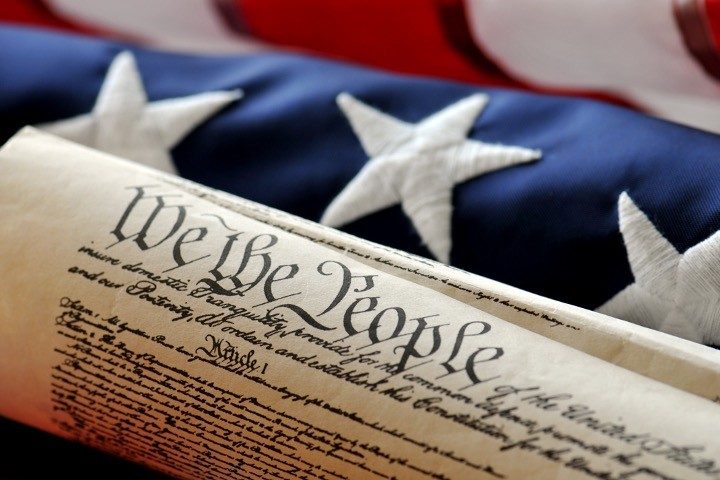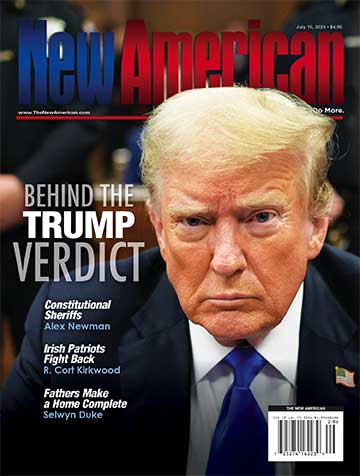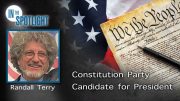
In this second and final article on the history of the office of speaker of the House, we will witness the election of the first speaker of the House under the Constitution that went into legal effect in 1789 through its growth during the 19th century, and finally the development of the office into not only a political potentate, but as one near the top of the presidential succession roster.
On April 1, 1789, Frederick Muhlenberg was elected as the first speaker of the House of Representatives during the inaugural session of Congress. Serving from 1789 to 1791, Muhlenberg played a foundational role in shaping the office of the speaker. He was a key figure in the early days of American politics, presiding over the House during the First Congress and overseeing the drafting of the Bill of Rights. Muhlenberg’s tenure set important precedents for the speaker’s role, emphasizing impartiality, order, and leadership. His contributions laid the groundwork for the influential position the speaker of the House holds in American governance today.
Emergence of the Speaker as a Party Leader
The emergence of the speaker of the House as a party leader in the United States is a fascinating chapter in our constitutional history. The framers of the U.S. Constitution envisioned the speaker as a presiding officer, tasked with maintaining order and facilitating debate within the House of Representatives. In the early years of the Republic, the role of the speaker was largely ceremonial, devoid of the partisan influence we associate with the position today.
However, the seeds of the speaker’s transformation into a party leader were sown in the early 19th century, as political parties began to take shape. It was during the presidency of Thomas Jefferson that the speaker’s role evolved significantly.
Jefferson’s party, the Democratic-Republicans, saw the speaker as a crucial ally in advancing their legislative agenda. Speakers such as Henry Clay and Thomas Reed demonstrated their ability to use the position to shape the House’s proceedings and influence party politics.
The true turning point came with the rise of the modern two-party system in the mid-19th century. As the Democratic and Republican parties solidified, speakers started to align more openly with their respective parties. The role of the speaker became increasingly political, with the speaker often being a prominent member of the majority party and a key strategist in advancing party priorities.
Today, the speaker of the House is not only the presiding officer but also a prominent party leader, playing a pivotal role in shaping the legislative agenda and party strategy within the House of Representatives. This transformation reflects the dynamic evolution of American politics and the enduring relevance of the U.S. Constitution in adapting to changing political realities.
James K. Polk: A Speaker Turned President
James K. Polk, often overshadowed by more celebrated American presidents, played a pivotal role in shaping the role of the speaker of the House in national politics during his time in the House of Representatives. Serving as speaker from 1835 to 1839, Polk demonstrated a deft combination of leadership and political acumen that left an indelible mark on the office.
Polk’s speakership coincided with a period of significant political change in the United States. The Second Party System, characterized by the rivalry between the Whigs and the Democrats, was taking shape. As a staunch Democrat, Polk utilized his position to advance his party’s agenda. He effectively marshaled party discipline, helping to consolidate Democratic power in the House.
Polk’s tenure as speaker was marked by his strict adherence to the principles of party loyalty, a practice that set the precedent for future speakers. He wielded the speaker’s gavel not only to preside over debates but also to guide legislation, making him one of the first speakers to actively shape the House’s agenda.
Furthermore, Polk’s time as speaker catapulted him onto the national stage and positioned him for his eventual presidency. His tenure in this influential role demonstrated the potential for speakers to be key political figures and party leaders.
Ultimately, Polk’s legacy as a speaker of the House who leveraged his position to advance his party’s interests contributed to the evolving role of the speaker in American national politics.
The Mid-19th Century and Sectional Conflicts
The mid-19th century witnessed the speaker often being embroiled in intense debates, reflecting the nation’s growing divisions over slavery. Figures like Howell Cobb and Nathaniel Banks found themselves navigating these challenging times as speakers, struggling to maintain order and address the deepening rift between the North and South.
Howell Cobb was a Georgia politician who served as a member of the U.S. House of Representatives and as speaker of the House from 1849 to 1851. His speakership came at a critical time when sectional divisions over slavery were intensifying.
Cobb, a Southern Democrat, played a role in attempting to preserve the delicate balance between the North and the South by brokering compromises and managing legislative debates. His efforts aimed to prevent the outbreak of civil strife over the issue of slavery.
Later, Cobb went on to become the secretary of the treasury under President James Buchanan and then served as a Confederate general during the Civil War, demonstrating his evolving role in the tumultuous period of American history.
The Speaker’s Role Consolidated
The late 19th and early 20th centuries brought further consolidation of the speaker’s power. Figures such as Thomas B. Reed and Joseph G. Cannon asserted control over the legislative process, modernizing and streamlining House procedures. The passage of the “House Rules Committee” resolution in 1911 aimed to limit the speaker’s influence and promote a more democratic process within the House.
Mid-20th Century Influential Figures
The mid-20th century saw influential speakers such as Sam Rayburn and Tip O’Neill. Rayburn, who served as speaker for a remarkable 17 years, played a significant role in advancing President Franklin D. Roosevelt’s New Deal legislation. O’Neill, a skilled negotiator, was at the helm during important legislative battles in the 1970s and 1980s.
Modern Speakers and Their Impact
In recent decades, the speakership has continued to evolve. Figures such as Newt Gingrich, Nancy Pelosi, and Paul Ryan have wielded substantial influence over the legislative process and national policy debates. The speaker is not merely the leader of the majority party but also a prominent public spokesperson and a symbol of congressional authority.
Of course, with the ouster of Kevin McCarthy from the speaker’s chair, the power of the position was shown to be much more vulnerable than many would have imagined. McCarthy’s almost Machiavellian maintenance of his office was just too accommodating by half and has resulted in McCarthy’s name being mentioned in history books from now on. Not quite the historical legacy he hoped to leave.
Conclusion
The history of the speaker of the House of Representatives in the United States is a testament to the dynamic nature of American politics and governance. From its origins as a procedural role in the early days of the Republic to its current status as a powerful party leader and legislative influencer, the Speaker’s office has adapted to the changing needs and challenges of the nation. Through centuries of evolution, the speaker of the House remains a central figure in the American Republic, embodying the enduring principles of representation and leadership in the legislative branch.



